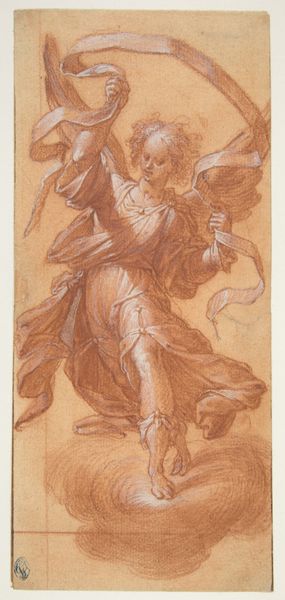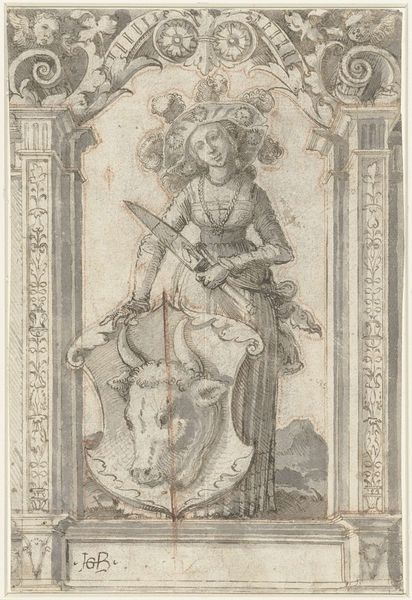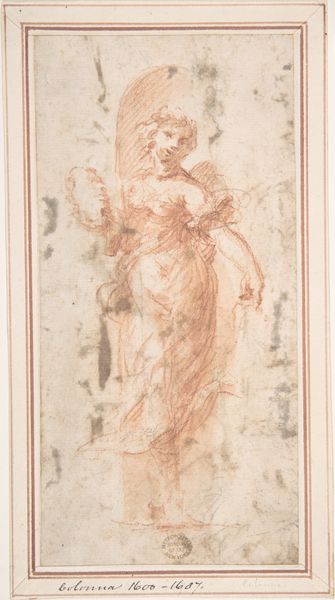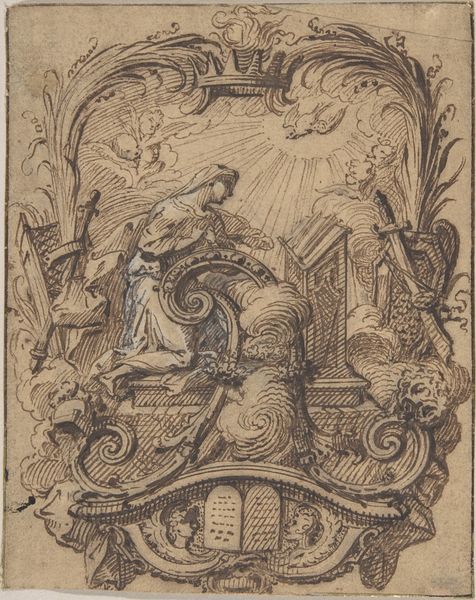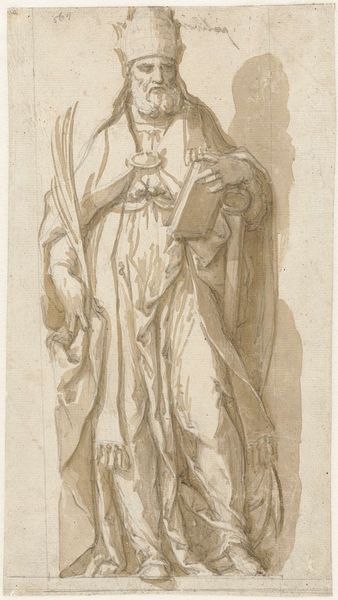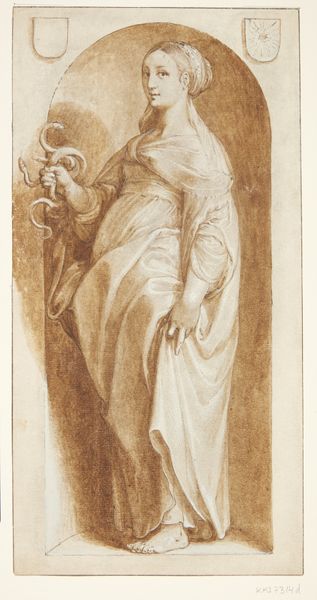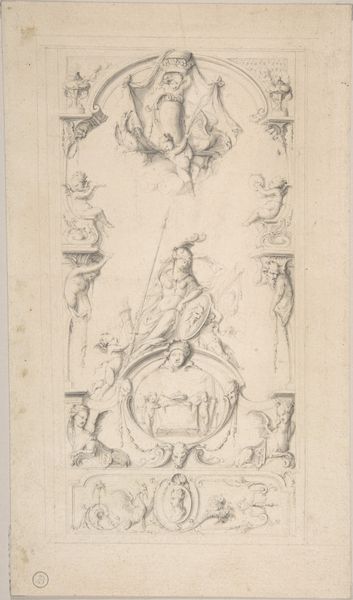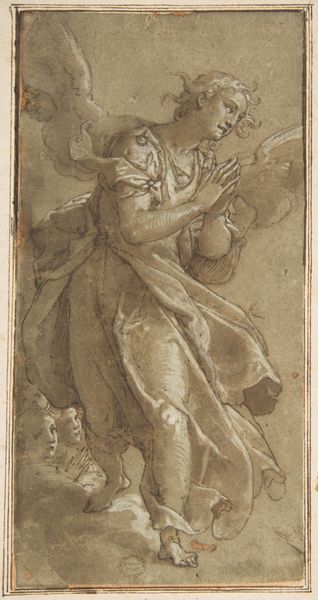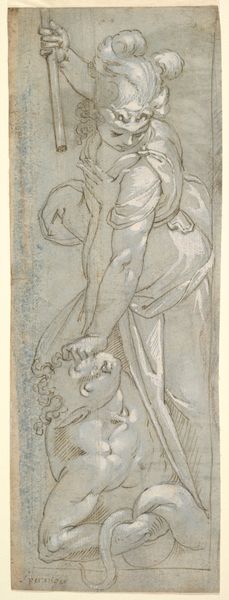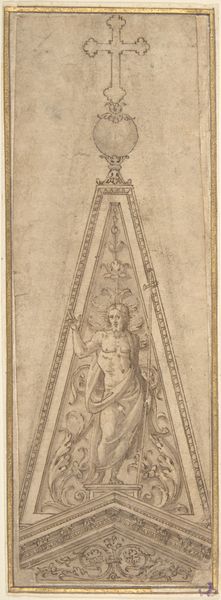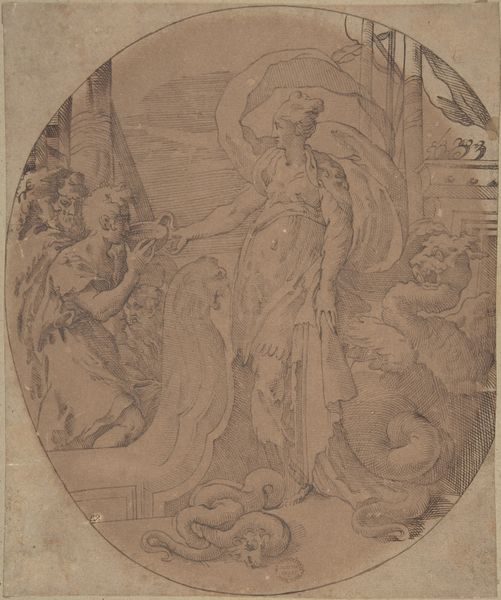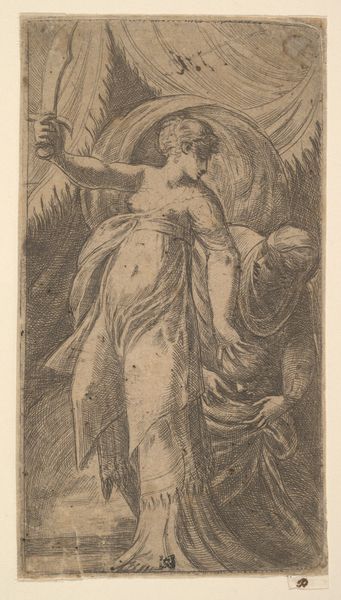
Design for the Decoration over an Arch with the Personification of Justice 1680 - 1730
0:00
0:00
drawing, print, charcoal
#
drawing
#
allegory
#
baroque
# print
#
charcoal drawing
#
figuration
#
line
#
charcoal
#
history-painting
Dimensions: 5 5/16 x 2 1/16 in. (13.5 x 5.2 cm) maximum; drawing partially silhouetted.
Copyright: Public Domain
Curator: Let’s dive into this drawing, shall we? Editor: Absolutely! This is "Design for the Decoration over an Arch with the Personification of Justice," an anonymous charcoal drawing from between 1680 and 1730. It’s housed at the Met. I'm immediately struck by the central figure—Justice— and the sort of weightiness she embodies, yet she’s floating. How do you interpret this tension? Curator: The tension you perceive is fascinating and points directly to the intersection of power, representation, and social order during that period. Consider how the depiction of Justice—often a female allegory—serves as a symbolic guarantor of societal structure. Think about who gets to define justice and for whom. Is it truly blind, as the imagery suggests? Editor: That’s a compelling point. It raises questions about who this “Justice” really serves, given the context of the 17th and 18th centuries and its patriarchal structures. How would this image have been read then versus now? Curator: Precisely. Back then, it might have been received as straightforward propaganda reinforcing the status quo. Now, we can unpack its assumptions and power dynamics. This archway design suggests that justice literally stands above, but from whose perspective and at what cost? Is the use of charcoal a symbolic choice, referencing darkness or perhaps erasure of uncomfortable truths? Editor: The charcoal aspect adds another layer, almost like a fading memory of justice. It definitely moves the work from a simple decoration to something far more provocative. Curator: Exactly. What began as a seemingly straightforward image of justice opens up a dialogue on societal values and who gets represented. Understanding its function within broader power structures allows us a more critical view of both art and history. Editor: I see now that by questioning the image’s purpose and cultural context, we unveil a complex narrative about justice beyond its surface representation. Curator: Indeed. And in that interrogation lies the true power of art historical inquiry.
Comments
No comments
Be the first to comment and join the conversation on the ultimate creative platform.
